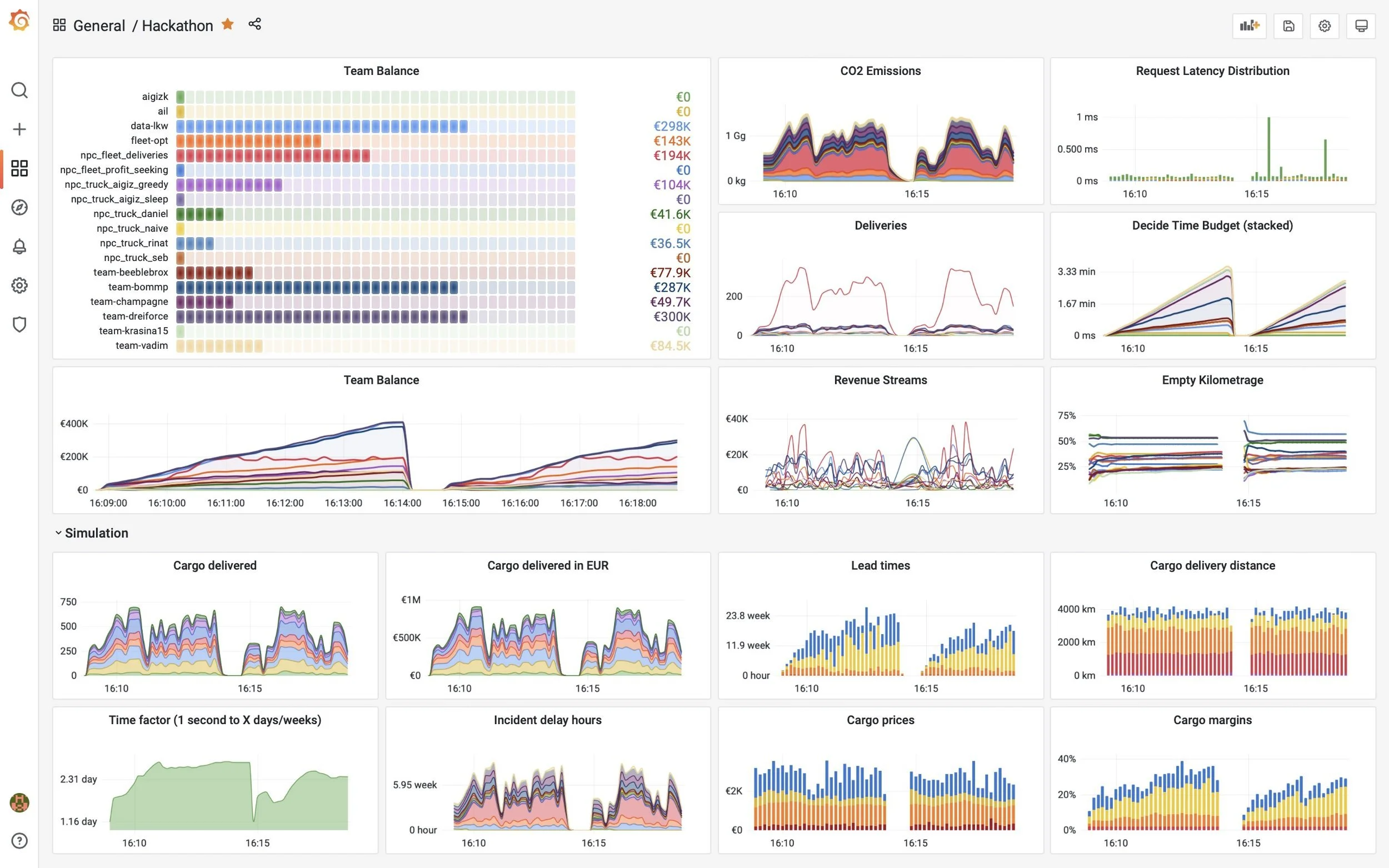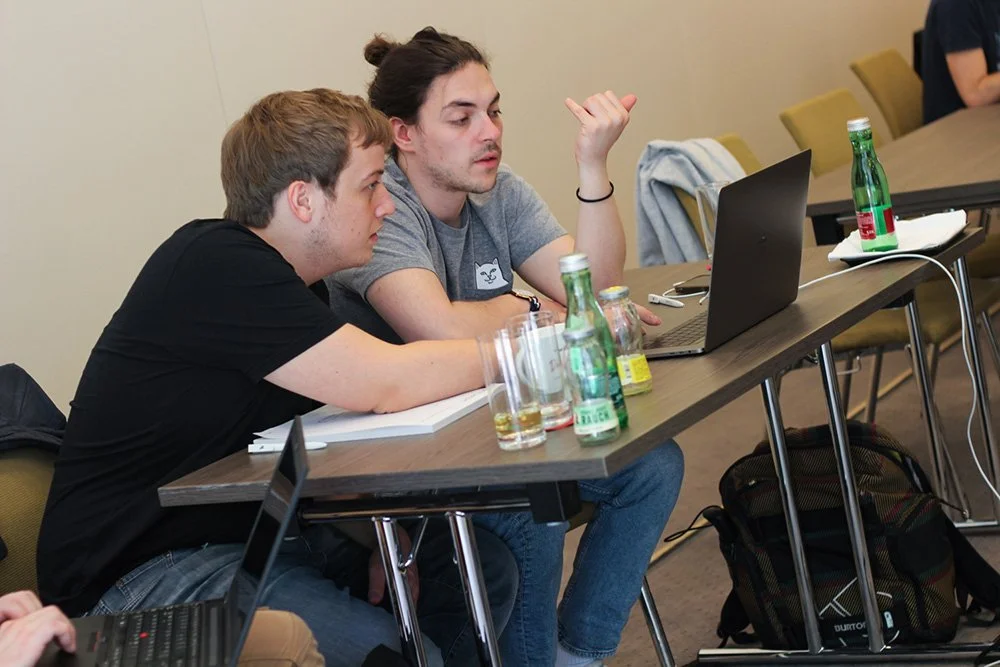Guest Blog: Team Dreiforce at the Trustbit Hackathon!
Authors: Jakob Geringer, Lukas Wallenböck, Simon Lehner-Dittenberger
We have participated in several hackathons over the years. Accordingly, we have certain expectations for these events. This much can be said in advance, the first Trustbit Hackathon was a positive experience for us. The location in the Parkhotel Schönbrunn was great and the example was well thought out.
The Competition
In Round 1, the goal was to have a truck fleet operate as profit-oriented as possible. To be honest, it was a bit difficult at the beginning to understand the concept, to get into it and to set up the provided project correctly. It took us about half an hour but then it really took off.
Round 2 was an extension of the previous one. There was the same goal to make as much profit as possible, but in addition there were some regulations like CO2 emissions, sleeping patterns of truck drivers, opening hours etc. It was definitely more challenging than Round 1 and developing a working strategy took quite some time.
The Approach
So much for the rules; now to our approach:
We knew that we were competing with the other teams and a bunch of NPC players on the same map; therefore, the most efficient deliveries, emission wise, were most certainly hard to get. When the offers stay around for some time, the profit margins get better, yet the CO2 emissions stay as bad as before. So we tried to get those deliveries other players would not take because they were too polluting or had bad delivery timeframes, which thereby got better revenues as time went by.
Another thing that certainly made a difference was the fact that when the other teams were letting their drivers sleep for some hours before taking on a delivery to optimise the arrival time, we would just take that offer and most of the time still make a profit, even if our drivers had an incident along the way or got there in the middle of the night and had to sleep for some hours until the customer opens.
The idea basically was just to go against the concept of the others and try to find a niche, where you can profitably get the cargo. Since we were all playing on the same map, it's a little hard to know now how accurate the behaviour of our fleet really was. Whether we actually had a lot of night runs or simply delivered outlying locations with cargo that brought a lot of money in the long run, we would have to read out of the traces.
The Strategy
Our strategy therefore was to be as greedy as possible, and accept high value contracts others would not have taken because of the CO2 factor. It is definitely not the environment friendliest strategy but it somehow reflects the real world. Hypothetical, governmental changes, such as increasing the CO2 prices and having higher penalties for not letting your driver sleep enough, would have led to a much worse results. If this had been the case, other teams would have had better strategies.
Also the contest time of 2:30h was beneficial for us. The second example had many hyper-parameters to play with, which we mostly left untouched. Developing a strategy and getting feedback in 5-minute intervals definitely kept us busy.
The contest could benefit from a longer runtime; maybe some extra hours or also a few days would be great. Since the second challenge was very complex, it would be really fun to search for a better solution and tweak the hyper-parameters. Perhaps one could develop a solution that learns from its opponents and adapts its own strategy. The possibilities are limitless.
The Highlight
A highlight was definitely the interactive Grafana dashboard, which showed all the interesting parameters exactly. In conclusion, the first Trustbit Hackathon was a great success and we will certainly participate again next year.


